The Samburu
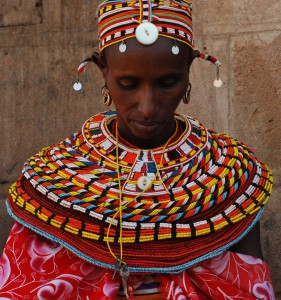 The Samburu are a traditional, cooperative, group-oriented and friendly people who live in small communities of families in the Samburu district of Northern Kenya. Although historically nomadic herdsmen, there are more cases of families settled semi-permanently in the bush and in villages like Sereolipi and Ndonyo Wasin.
The Samburu are a traditional, cooperative, group-oriented and friendly people who live in small communities of families in the Samburu district of Northern Kenya. Although historically nomadic herdsmen, there are more cases of families settled semi-permanently in the bush and in villages like Sereolipi and Ndonyo Wasin.
Because of the harsh climate (very hot and dry most of the time), much of Samburu culture is based on helping the group work together to thrive, care for everyone, and withstand hardships like droughts. In recent years, this has become increasingly challenging, as the environmental realities of climate change are directly affecting the livelihood of the Samburu. Chief George, leader of the Samburu, acknowledges that more cattle (cows, goats and camels) die each year and it has become an imperative for the Samburu to find alternative ways of making a living in order for the survival of the culture and community as this environmental challenges force a change to their longstanding way of life.
Most Samburu wear traditional clothing, which consists of light, brightly colored wrapped fabrics that help keep them cool in the hot northern Kenyan heat, and beaded jewelry such as bracelets and necklaces.
Along with customary clothing, there are ancestral rites of passage in Samburu culture that signify an individual’s growth over time. For girls, there is a ceremony that means they are growing up and are ready for marriage. For boys, it is becoming a “warrior” or moran. Being a warrior is an exciting and important job for the young men because it is their job to protect and defend their community from harm. When a boy is 15 years old, he becomes a warrior. For the next 10 to 15 years, he will be a warrior. Warriors may not get married or own livestock because their only responsibility is to protect the tribe. During this time, a warrior lives with his fellow warriors who are all around his same age. These warriors will become lifelong friends and consider themselves as close as brothers. After the warrior stage, young men become “young elders” and are able to marry, have children and own animals. They are the young leaders of their community and work with the “elders” to make decisions that are best for the tribe. At age 45, a man becomes an elder. The group of elders works together with their families and other community members to make choices and decisions for the tribe. In Samburu culture, it is about group success and survival in the face of many challenges.
IMPORTANT BASIC INFORMATION—
The Samburu people live in Northeastern Kenya, just above the equator in the Samburu Province that borders Ethiopia. A traditional tribal community, the bulk of the Samburu live in small groups of families (between 8-15 families) in the valleys and mountains of a 4,500 square mile area of the northern Rift Valley. The Samburu are as semi-nomadic pastoralists, moving every few months to find grass for their livestock. Once the grass is gone, they will pick up and move in search of land better suited for grazing.
The Manyatta
Almost all of the Samburu live in an encampment called a manyatta. To match the nomadic lifestyle, their huts or “e nkaji”, are made to move, constructed from sticks and twine and with a thatched hut roof. Manyattas have either dried cow skins or dirt for floors in their dwellings. Other things you will find in a home include: a small fire pit for cooking, a sleeping area located in the back, a plastic bin for washing, and decorative cloth.
It is the Samburu women who build the manyattas – from e nkaji to thorn tree barriers. In Samburu culture, a wife must build the hut for her husband. If a man is not married, he must employ a woman to build the hut for him (approximately $60 US). Often, all family members will sleep together in a single e nkaji, the mother and father on the floor with their children.
Food
The traditional Samburu diet consisted exclusively of blood and milk taken from cows. A mixture of the two creates a pinkish liquid that is rich in iron, protein and calories and is a renewable sustenance source for communities out in the bush who cannot carry meal or rice with them as they move around the region. This is still the case for many Samburu, but is changing as more and more Samburu become settled in towns rather than moving every few months with their cattle.
Meat is reserved for special occasions—weddings, births, deaths and the induction into becoming a warrior. On these occasions, the celebration is shared among the entire community.
Men and women do not eat meals together. This stems from the tradition that once a young man becomes a warrior, it is no longer appropriate for his mother (or indeed any member of the community) to prepare food for him. Instead, warriors must eat away from the community, together. It is considered extremely frowned upon for a warrior, or indeed any Samburu, to eat alone, as it is deemed selfish and inconsiderate to the overall health and success of the group.
Age Sets
Age sets determine the roles and responsibilities for the male Samburu and are designed to benefit the community at large.
- Herders (Under 15): Samburu children are in charge of taking care of the family’s livestock. Taking goats and cattle out to graze consumes most of their day, every day, and Samburu children begin working with the animals as early as the ago of 5. Initially, and in many cases still, this was the single large roadblock to education in Ndonyo Wasin and Sereolipi. At first, parents were reluctant to release their children to school because it would leave no one to take care of the livestock. This is a conflict the community is still addressing, although becoming less of an issue.
- Warrior(s), a.k.a. the Moran(i) (15-30): Although there is no set age for the transition (it is at the father’s discretion to choose), Samburu males go off for circumcision around the age of 18 or 20. Circumcision is an important ritual for the Samburu, as it is in many African cultures, signifying the point in life where each boy becomes a man. Boys march off into the bush in groups of 10 or 15, where they meet a traditional healer who performs the circumcision with a spear (two other relatives or appointed friends hold the back and legs of each boy during circumcision). When the boys return, now as men, they take on an entirely different role in the community. Now they are warriors and must wait 15 years until they can marry. During that period they are in charge of protecting all Samburu people. They begin to wear the traditional Samburu attire. They can no longer live in their family’s manyatta. They cannot eat any food cooked by Samburu women (until they are married) and must not be seen eating by women at all.
- Junior Elders (After Marriage): After a Samburu man marries, he becomes a junior elder and becomes a part of the large decision making consensus group that rules over all important community decisions.
- Elder (Mzee) (50-60): The Elders are a highly respected faction in the Samburu culture and are called upon to make important decisions in personal and community matters. There are usually between 100-200 elders in the Samburu tribe at any given time.
For women the roles are a little less regimented:
- Helping around the manyatta: (under 13) girls assist their mothers in the childcare of their families, cooking and household chores like gathering water, cleaning the e nkaji, carving water and food containers from gourds and wood.
- Pre-wedding: Before their own weddings, girls can date and have relationships with the morani before their marriage. Sexual relations are permissible, but pregnancy is not sanctioned. The girls who date the morani will not usually end up marrying them, as they are more likely to marry a Junior Elder who is older.
- Getting Married: Most marriages are between men in their late 20s and women/girls in their teens. This is both a function of cultural history and a necessity in terms of population control. In effect, by forestalling the birthrate among young unmarried women and unmarried men, the health of the community is maintained and the population does not increase too rapidly.
- Mammas (Yeeyo): When a Samburu woman becomes a mother she is called “Yeeyo” which means mamma. The “mammas” are expected to lead the community at it base level just as the elders lead the direction of the community as a whole. She is considered the female equivalent of a moran, providing for and protecting her children and the children of her husband if he takes multiple wives. In addition to child rearing, mammas perform the bulk of the domestic chores. These tasks include collecting firewood, fetching water, tending to the livestock and walking to the market to purchase or trade items she has made by hand for dry goods such as rice or cloth.
A PDF of this document is available for download: The Samburu.
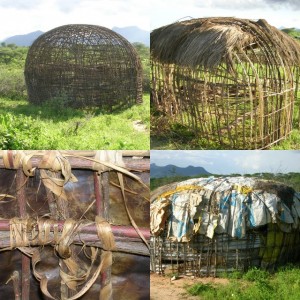
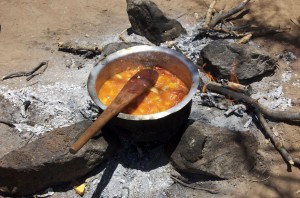
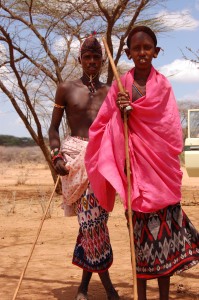
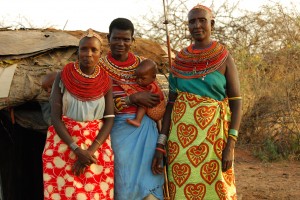


Leave a Reply
You must be logged in to post a comment.